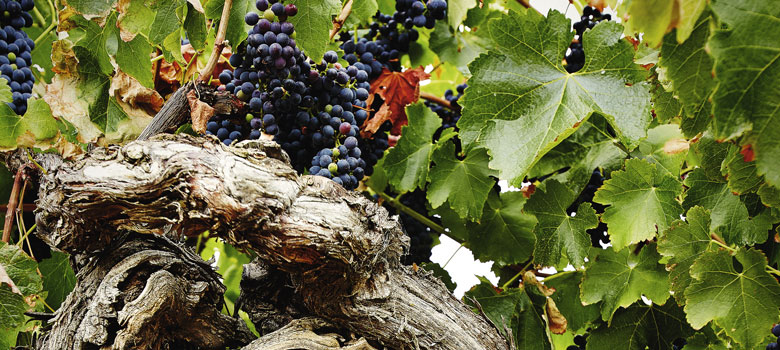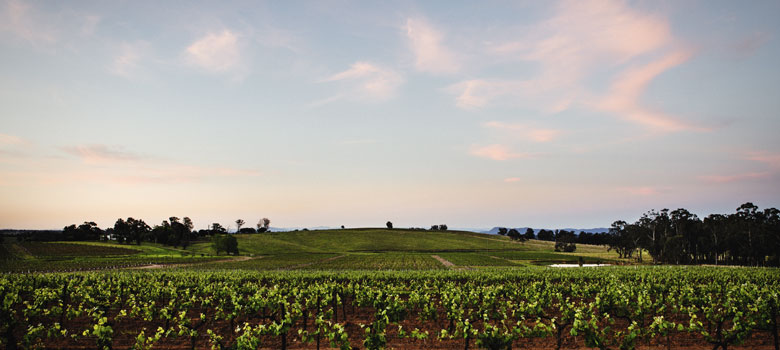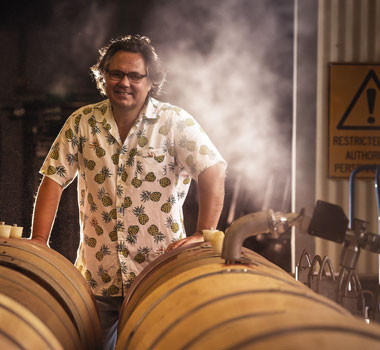
Wine
Australian Wine: A Flavour Evolution
While French varieties like Shiraz and Chardonnay have been in Australia since the 1830s, it’s taken a fairly recent evolution in winemaking to create uniquely Australian styles. And amongst the savviest winemakers, the future is all about embracing diversity.
Much has been said about the pace at which Australian wine has been able to adapt and reinvent itself. This is especially evident in Shiraz and Chardonnay, two of our flagship varieties that have been dramatically overhauled in recent decades.
“Shiraz in Australia has really changed from, if you go back to the 1990s, very oaky wines driven by a lot of American oak,” says Leconfield winemaker Greg Foster.
“You had those creamy vanillin type characters coming through, sometimes coconut, which were quite strong. Today, it’s all about fruit, and if you enter wine shows, the minute your wines stand out as oaky, the judges mark them down. They want to see varietal fruit character, and oak very much in the background, offering texture and structure to the palate.”
Chardonnay has been through a similar evolution, from what Riposte Wines founder Tim Knappstein labels the “very rich, big, fat, dark coloured and alcoholic wines” of the 1990s.
“I think we as winemakers did a sensational job putting the public off drinking Chardonnay,” he says. “We’ve seen the light and we’re now making Chardonnay that’s lower in alcohol, brighter, showing better fruit character, and more complexity, with more intelligent use of oak.
“I think the wines are much better for it. You’d be struggling to pick some of them from white Burgundies. But it’s taken a while to get the new style off the ground and in the consumer’s mind, because after the big, fat styles there was this period where people were putting out unoaked Chardonnays, which were some of the least interesting wines I’ve ever seen.”
And like many industry commentators, Knappstein believes some of the modern examples of Chardonnay have gone too far to the other extreme.
“You have the winemaking artefact, that little bit of ‘struck match sulphide’ and lees work, but the wines lack that central core of fruit,” he says. “There is a tendency always for the pendulum to swing a bit far one way before it swings back.”
Regional expression

Pictured above: Sunset over the vineyards at Tyrrell’s in the Hunter Valley.
Tyrrell’s Mark Richardson attributes the evolution of these varieties to Australian winemakers increasingly embracing the positive attributes of their unique regional styles.
“When I started, you had to be ‘Robert Parker big’ to sell any red wine, and that’s not what we do (naturally) in the Hunter Valley,” he says. “We make a much more elegant style, and more than I remember when we first started, we’re embracing that elegance and uniqueness in our wines.”
Over Richardson’s 25-year career at Tyrrell’s, this has meant a combination of tweaks both in the vineyard and the winery, that together amount to significant change.
“You don’t hang the grapes out on the vine to get super ripe and concentrated, you don’t over-extract during the ferment,” he says.
“We used to crush the life out of them to get every little bit of tannin and colour out of the skins to try to make something ‘big’, whereas now I haven’t crushed a berry for 14 years.”
Leconfield’s Foster says that overall, Australian winemakers have wound back the percentage of new oak they use in maturation, as well as switching to French oak for a lighter touch on the wines.
“And ten years ago, there was probably no-one using whole bunches in ferments, like they do in Burgundy with Pinot Noir,” he says. “Again, it’s all about fruit intensity and making finer wines.”
Careful choices


Pictured above (from left to right): Tim Knappstein of Riposte Wines; Bruce Duke of Naturaliste Vintners.
With Chardonnay meanwhile, Tarrawarra winemaker Clare Halloran says the two biggest changes have been picking for lower potential alcohol, and backing off malolactic fermentation.
“If you’re picking for 14 per cent alcohol and then putting it through 100 per cent ‘malo’, you are going to get those big, buttery, blousey Chardonnays,” she says. “Having that high natural acidity in our fruit when we pick it means that we don’t need to actually add acid to the wine.
“That really helps, with these modern wines maturing well for over ten years, in fact I’d be far more likely to put Australian Chardonnay down than I would French Chardonnay at the moment, mostly because we’re all using screw caps.”
Given such significant change in a short period of time, Naturaliste Vintners’ Bruce Duke says Australian Chardonnay, realistically, is a broad church of white wine styles.
“Even within a single region like Margaret River, I make three very distinct styles of Chardonnay that each reflect the terroir of where they come from,” he says.
“One of the things I love about Australian Chardonnay is the huge diversity of styles. I think Chardonnay is a very global entity, and Australian winemakers put a lot of effort into travelling, tasting, and sharing information, which is now far easier.”
Langmeil Winery CEO Matthew McCulloch says that with more than 65 recognised wine regions across Australia, it’s futile to apply a broad brush to any variety.
“You look at Hunter Shiraz, Barossa Shiraz, then to Great Southern Shiraz. They’re all different and they all have an individual character,” he says.
“That’s what is going to be the evolution of Australian wine as a whole, that greater regional diversity, which will then appeal to different people depending on their taste.”
However, he acknowledges, it is the more widely available, generic expressions of Australian Shiraz that typify the category for consumers globally.
“Most stereotypes are based on truth at some point, that’s where they’ve come from,” he says. “There’s a lot of South East Australian wine out there, which is ‘Australian Shiraz’. But as soon as you come out of SEA, even to state level, there’s much more diversity.
“It’s the same in every country around the world. You have a generic version of whatever that variety or appellation or region is, and then within that you have better quality examples. You’ve got generic Bordeaux and then you’ve got the first growths.”
distinct characters

Pictured above: Picking the Chardonnay at Tyrrell’s.
Halloran believes the contemporary approach to picking, vinification and oak treatment is making Australian Chardonnay more expressive of region and site.
“Even though Margaret River Chardonnay is another cool climate region, it looks nothing like Yarra Valley or even Mornington Peninsula Chardonnay,” she says.
“They’re all quite distinct and quite unique, so I think it’s pretty hard to say, ‘this is what Australian Chardonnay is’. And then compare that to, say, the Hunter or Riverina, you’re going to get a very, very different expression of the same variety.”
But Tyrrell’s Richardson argues that even accounting for today’s less heavy-handed approaches to production, Chardonnay is an expression of an individual winemaker’s desired outcome.
“You can make that big, fuller style of Chardonnay if you think your customers want it, or you can make the lean, bonesy style, or you can make it somewhere in the middle,” he says.
For Shiraz, he says it’s important to keep in mind that for all the regional diversity, some of the most contrasting examples are only produced on a small scale.
“There’s still going to be a perception for a while that Aussie Shiraz is a big red wine, mainly because most of it’s produced in South Australia,” he says. “You’ve got the Hunter making a style of Shiraz, Canberra making its style, and Western Victoria too. But they are all relatively small regions, compared to the big South Australian vineyards making that bigger style.”
To keep the evolution moving in diverse directions, then, it’s going to take a willingness among consumers to branch out and discover the many different styles being made.
Writer James Atkinson is also the creator of the Drinks Adventures podcast. Listen now!